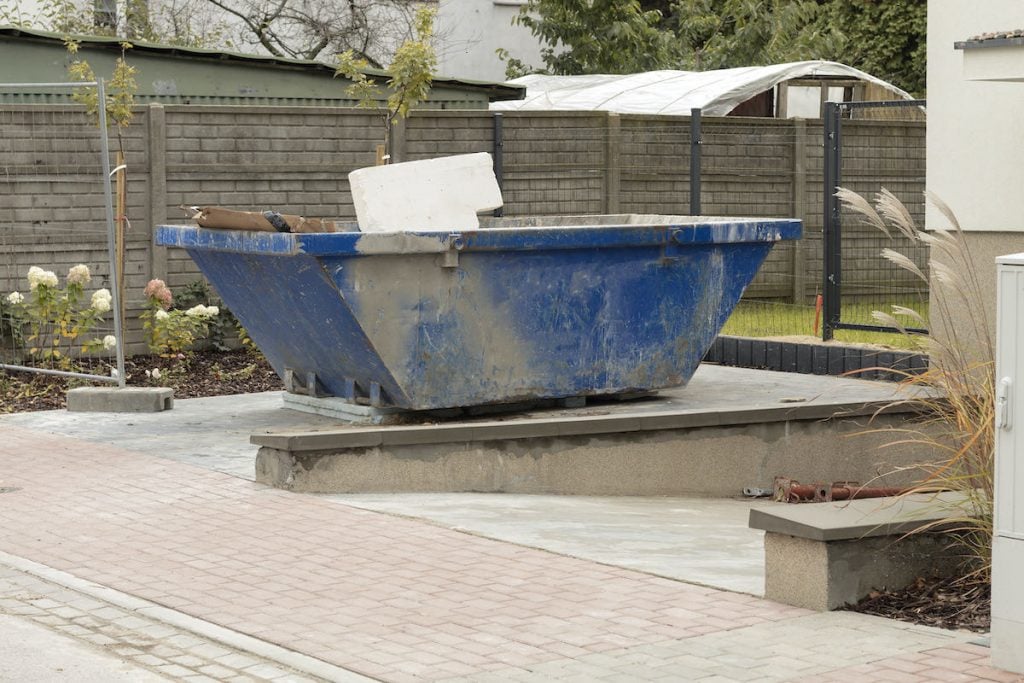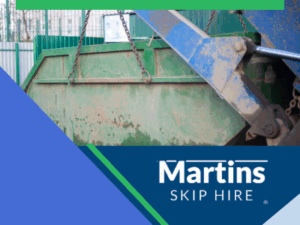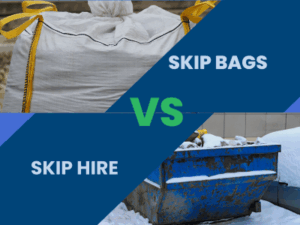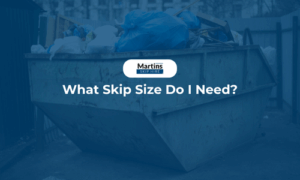Hiring a skip is a practical way to handle large amounts of waste, whether you’re tackling a home renovation, landscaping the garden or clearing out a commercial property. But skips aren’t a free-for-all. There are clear rules about what’s allowed and what isn’t. Getting it wrong can lead to extra charges or even a refusal to collect.
Here’s everything you need to know about skip hire, including a clear breakdown of what can and can’t go in, how full you can fill a skip, and tips to avoid common issues.
What Can Go in a Skip and What Can’t
| Items You Can Put in a Skip | Items You Cannot Put in a Skip |
|---|---|
| General household waste | Fridges and freezers |
| Garden waste (soil, grass, clippings) | TVs, monitors, and electricals |
| Wood, metal, and plasterboard (bagged separately) | Paint, paint tins, and solvents |
| Construction waste (bricks, tiles, rubble) | Asbestos or anything containing asbestos |
| Non-electrical furniture (sofas, tables, beds) | Gas canisters or cylinders |
| Plastic, paper, and cardboard packaging | Batteries and hazardous chemicals |
| Mattresses (may incur a surcharge) | Tyres and clinical waste |
This table isn’t exhaustive, but it covers most of the typical materials customers ask about. If you’re ever unsure, it’s always best to ask before loading the skip. That way, you avoid unexpected fees or issues with collection. Call us directly for more information.
Do I Need to Tell You About Certain Items?
Some items, like mattresses or plasterboard, are allowed in skips but need to be handled separately. For example, plasterboard must be bagged on its own and kept away from other waste due to recycling requirements. Mattresses are usually fine, but most providers add a small charge to cover the additional disposal process.
If you’re getting rid of these types of materials, just let us know when booking. We’ll make sure the right arrangements are in place and confirm any extra costs up front.
How Full Can a Skip Be?
You can fill a skip right to the top edge, but not beyond it. Most skips have a clear marker or line that shows the maximum fill level. Anything loaded above this line can make the skip unsafe to transport. In some cases, the driver may refuse to collect it or ask for the excess to be removed.
Overfilling is a common mistake, especially when people try to squeeze in last-minute items. If you’re in doubt, it’s almost always better to hire the next size up. It works out cheaper than ordering a second skip or being charged for a failed collection. If you’re unsure of what skip size you’ll need, Martin Skip Hire offers advice and help through every step of the process.
Final Thoughts
Understanding what can and can’t go in a skip saves you time, money and stress. It also helps keep your waste disposal legal, safe and efficient. If you’ve got unusual items, heavy materials or just need advice on the right skip for the job, get in touch and we’ll talk you through it.
Ready to book? You can order a skip online in just a few minutes, or give us a call for local advice and fast delivery.
 sales@martinskiphire.co.uk
sales@martinskiphire.co.uk 




